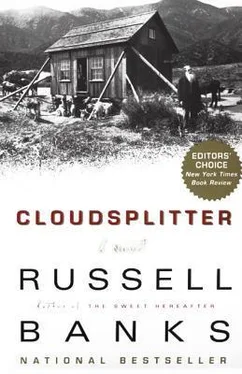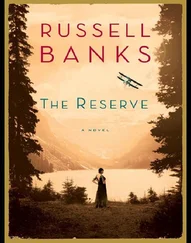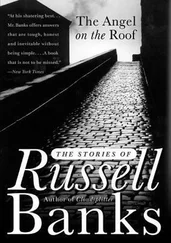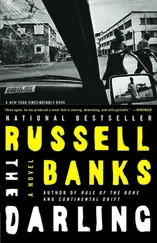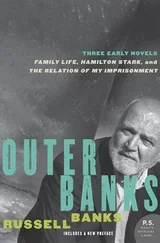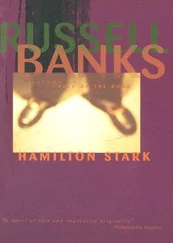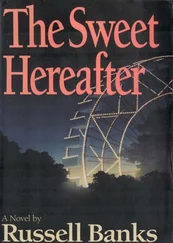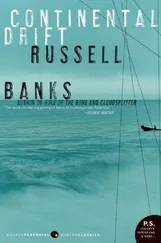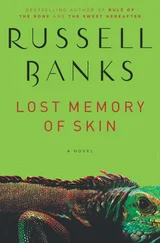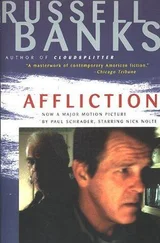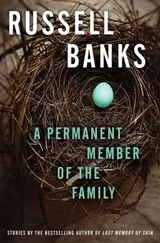I remember that winter, despite the tense stand-off between me and Lyman, as the most peaceful of all our winters in North Elba. Perhaps it was because we were free for once of “the work” and because Father was away. It put us more at ease with our neighbors, certainly, for it made us more like them — abolitionist in principle but not in action; devoted to our farm and livestock, but not at the cost of not socializing with our neighbors; religious to the point of regularly attending services on the Sabbath and otherwise honoring the day as we always had, but not preaching to everyone and thumping people with the Bible on every possible occasion.
Except for the fact that we had a Negro man and woman living with us in our house, we were no different from any other white family settled in that area. Like them, we holed up against the winter, did some hunting, ice-skated on Mirror Lake, repaired and built tools and furniture, spun wool and wove cloth, tanned hides and made new boots, harness, hats, and belts, and tended our flocks and cattle and horses. We ate our stores of salt pork, mutton, venison, and salt fish; we ate it roasted, boiled, baked, and in stews; with potatoes, squashes, beets, beans, pumpkins, carrots, and turnips from the cold cellar. We drank plenty of fresh milk, made cheese and butter in abundance, mashed our apples into cider, and warmed ourselves before the fire with sassafras tea. Like all good abolitionists, we eschewed sugar, but for sweets we had gallons of honey taken in the early autumn, and as we would not be able to tap our own trees till spring, we swapped hides with our neighbors for their extra maple syrup, using it to flavor meats, vegetables, and bread, and made maple sugar from it and sheets of hard maple candy. And we grew healthy and strong inside our warm house.
We said grace over every meal, prayed together in the evening, and sang the old hymns, and sometimes we even sang new songs, which we learned from our neighbors or from Susan or that Mary remembered from her childhood. We read The Liberator and Frederick Douglass’s North Star and from Father’s collection of books, and we older folks taught the little ones their ABCs and numbers, while Ruth worked with Susan and Lyman, teaching them with the primer to read adult books and periodicals.
And we read Father’s letters. Every few weeks, a new, long letter arrived from one of the stops in his odyssey through the courts, letters from Springfield, Troy, Pittsburgh, Boston, and Hartford. Instructional and scolding, as always, but also warm and affectionate, they were. As had been the practice for many years, we read them aloud, and then I or Watson copied the letters; we left the originals out on his desk, for further perusal and to keep track of his instructions, and placed the copies in Father’s steel box, protecting them against flood, fire, or theft. For posterity, as Father said, although up to that time preserving his letters had seemed mere vanity to me — especially after the Gileadites and our adventures in England, which had left me feeling somewhat disillusioned regarding posterity’s interest in my father and his work.
But increasingly that winter, Father’s letters spoke in unusual detail of his meetings with famous men and women, abolitionists all, some of them well-known white ministers and teachers, like Reverends Channing and Parker and the famous Horace Mann, some of them known as well for their support of female rights, like Dr. Howe and Miss Lydia Maria Child and Miss Abby Kelley, who was one of the best orators he had ever heard, said Father. There were famous Negroes, too: he met with Bishop Loguen in Syracuse and confided his plan, which, according to Father, “Bishop Loguen thinks noble and very possibly workable.” At a meeting in Hartford, he heard Miss Harriet Tubman address a hundred white people very bravely. Personally introduced to her afterwards by Frederick Douglass, Father said he “spoke at considerable length with her and found her a great warrior.” In Boston, he frequently found himself in the company of literary people and mentioned Thomas Wentworth Higginson and a young editor of The Atlantic Monthly, Franklin Sanborn, who took him to Concord to meet personally with Ralph Waldo Emerson, whom Father now admired, and his friend Henry Thoreau, “a firebrand on the subject of slavery,” wrote Father, “but a strangely misanthropic fellow, due to his loss of religion, I believe. I know nothing of his writings, but Mr. Sanborn assures me they are very good.” There were even some businessmen, he told us, who were becoming interested in aiding the movement generally and Father in particular: a fellow in the cloth-manufacturing business named George Stearns and “several rich men who want their money to go for something more substantial than speeches and newspapers and travel expenses for public speakers. I intend to satisfy them of this,”he wrote.
For one as close to Father as I, it was difficult to see him as others did. But it could not be denied that when he held forth on the subjects of slavery and religion in a public forum, he had a commanding presence, despite his high-pitched voice and stiff, somewhat Puritanical manner, and the more people deferred to him, the more he seemed to warrant their deference, for the attention and respect of strangers made him appear to grow literally in size and stature, as well as in lucidity and brilliance of speech. And he was never so tall and straight, never so articulate and convincing in argument, never so unquestionably honest and sincere, as when holding forth on the inextricably entwined subjects of slavery and religion.
It was as if Father saw all Americans residing inside a cosmic allegory, like characters in a story by John Bunyan, and his personal force and intelligence were such that he could make even the most materialistic of men believe it with him. People had grown more desperate now, more pessimistic as to the inescapable, gradual ending of slavery in America, and many who in the past had been content to oppose slavery merely with words were now beginning to consider more drastic action. As one of the very few who had come forward with a specific plan of action, and as perhaps the only man who seemed capable of carrying it out, Father was therefore a considerably more interesting figure now than he had been a mere six months earlier.
Also, it was of no small matter, I’m sure, that Father was unique among white abolitionists by virtue of his having captured the trust and admiration of Negroes, given him not because of his political power or wealth or social standing, for he had none, but because of the pure force of his anger. What in Father frightened the whites pleased the blacks. Frederick Douglass, Bishop Loguen, Reverend Highland Garnet, Harriet Tubman — they all vouched for him, spoke of him as one of them, and this surely must have impressed the whites sufficiently to balance their fear of him.
He was, after all, quite unlike the rest of the better-known white abolitionists. First off, he was a physically tough man, and it showed. Although he had never fought in battle, he gave the impression of a man who had. Tanned and lean as a braided leather quirt, straight as a stick, he had the physical energy of a man half his age. His spartan regimen of little sleep, basic food, no alcohol or tobacco, was impressive. Also, he spoke knowledgeably of weapons and of the acquisition and deployment of men, horses, and supplies; he understood principles of attack and siege, strategic retreat, counter-attack, and ambush; he had studied the memoirs of great generals and the histories of famous campaigns with sufficient diligence that he could sound like a man who had been at Waterloo with Napoleon himself, who had fought alongside Garibaldi, who had ridden with Cortez against the invincible Montezuma.
Читать дальше
